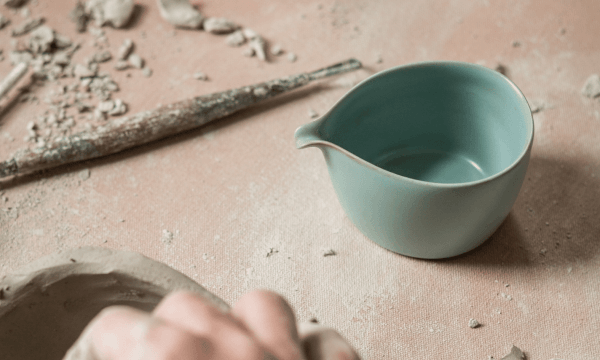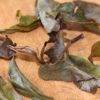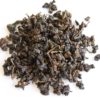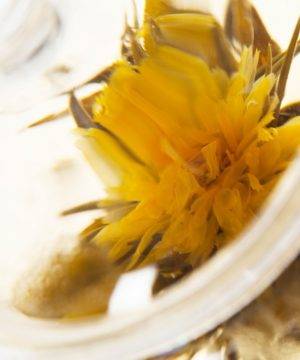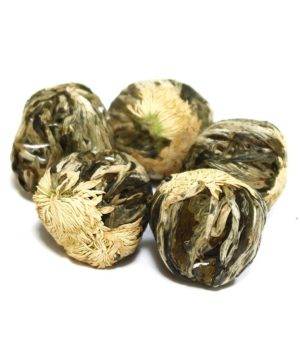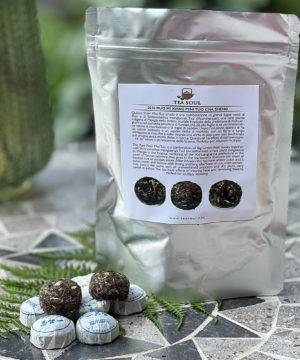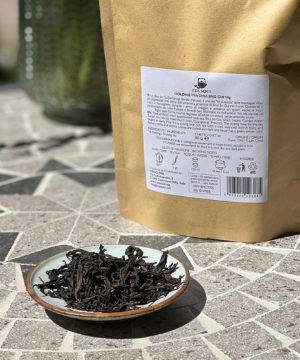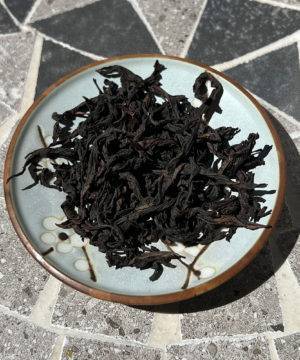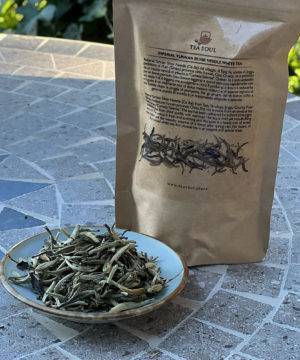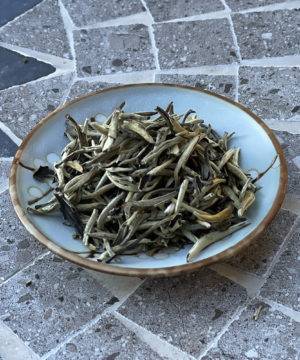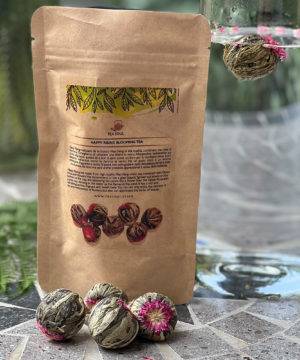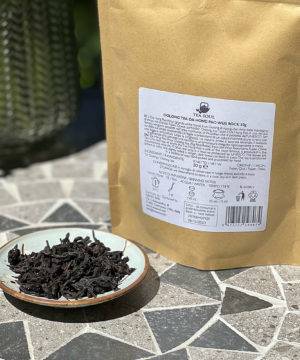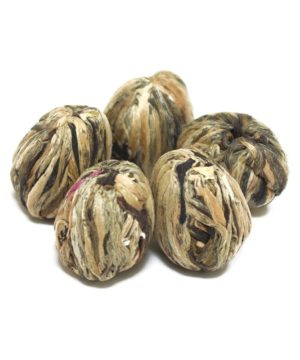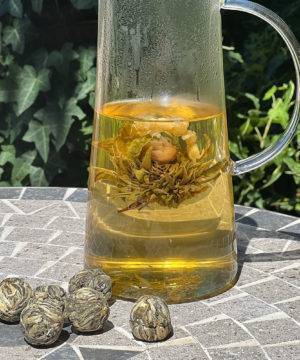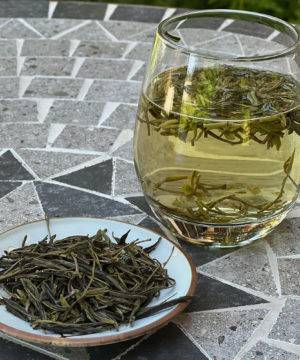-
×

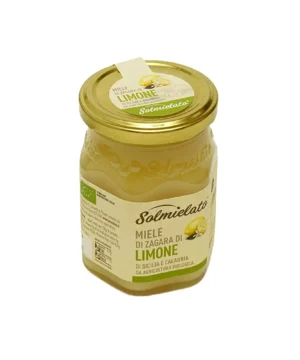 1 × 10.51€
1 × 10.51€ -
×

 1 × 9.30€
1 × 9.30€ -
×

 1 × 47.69€
1 × 47.69€ -
×

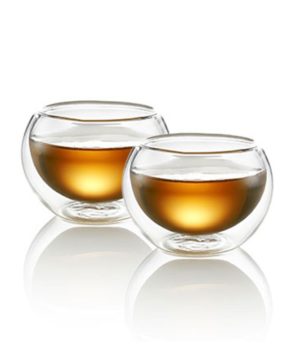 1 × 5.80€
1 × 5.80€ -
×

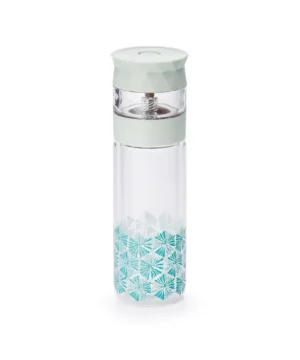 1 × 19.50€
1 × 19.50€
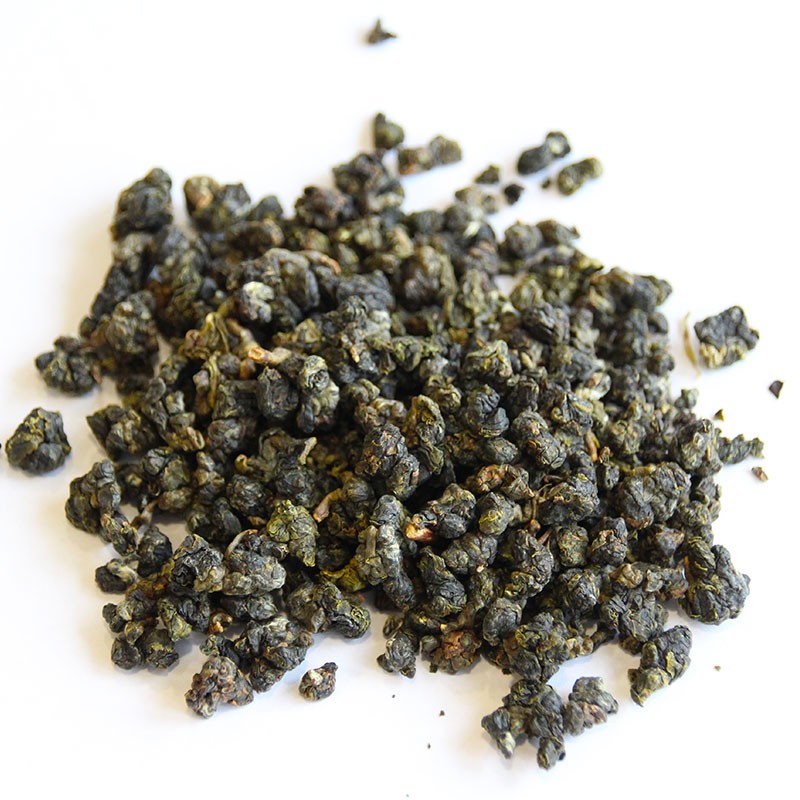

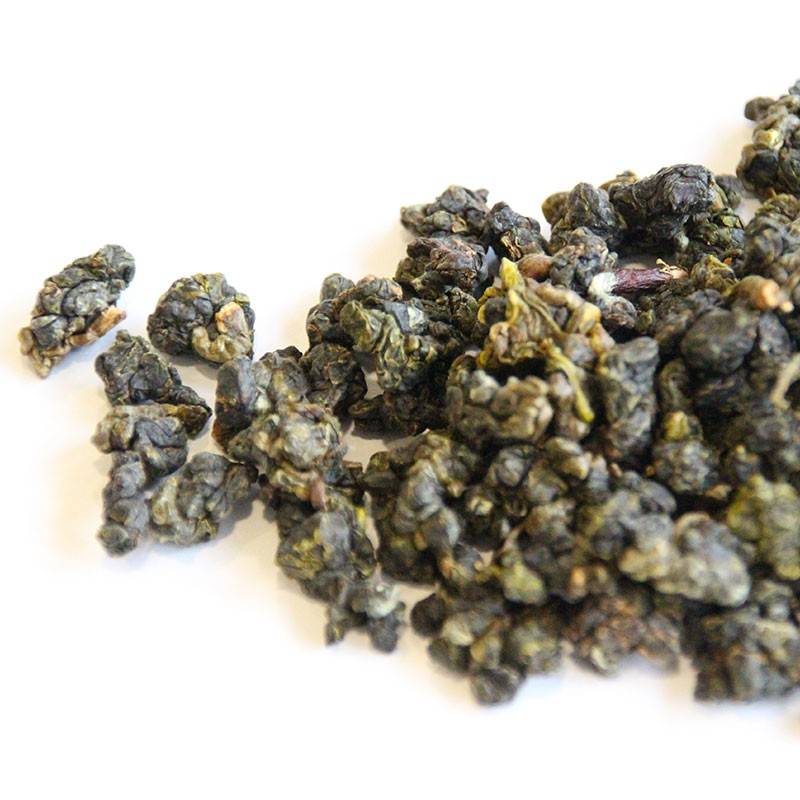

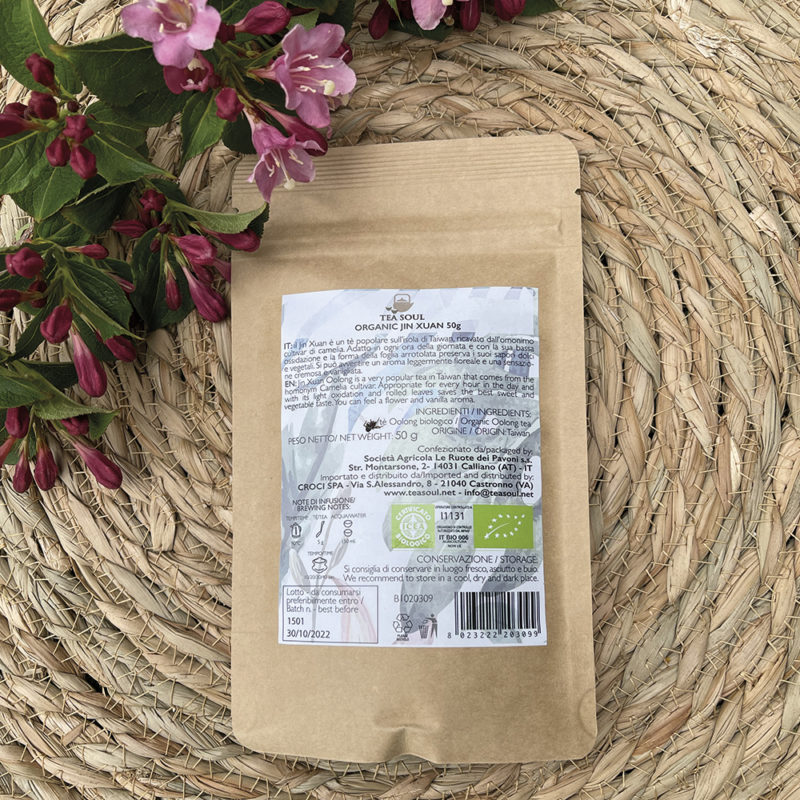

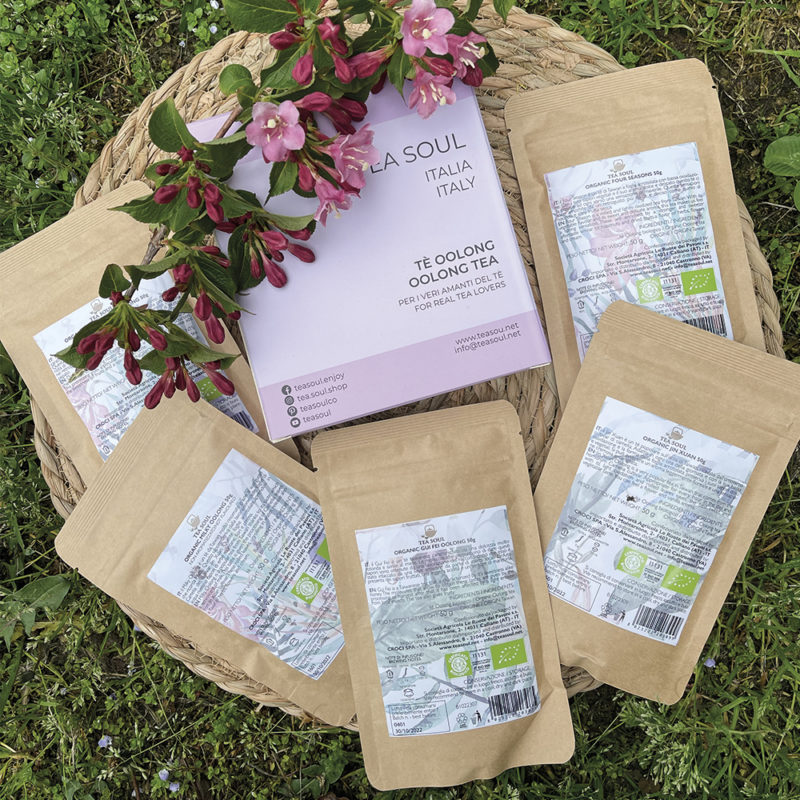

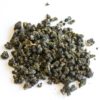

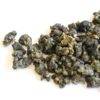

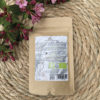



Jin Xuan Taiwan Organic Oolong Tea
4.40€ Original price was: 4.40€.3.20€Current price is: 3.20€. Taxes included
This low-oxidation oolong from Taiwan allows drinkers to better understand one of the island’s most famous cultivars, Jin Xuan or TRES#12. Thanks to their processing, these leaves know how to express a soft sweet and floral taste in the cup, great at any time of the day.
SKU: te-oolong-biologico-jin-xuan
Categories: Oolong tea, Organic tea, TrovaPrezzi, Offers, Tea
DON'T MISS DISCOUNTS AND NEWS!
Subscribe to our WhatsApp channel and receive all updates quickly and conveniently!
Subscribe to our WhatsApp channel and receive all updates quickly and conveniently!
Jin Xuan is a cultivar of Camellia sinensis which is widespread on the island of Taiwan and is often identified as TRES#12. Since the name of this tea is so general, it is necessary to explain a detail about these leaves and, to do so, we must talk about the harvest.
This Jin Xuan was harvested in March, which is before the rainy season. This has enabled it to retain a distinctive vegetal flavour that few Taiwanese teas can boast of, as harvesting these teas takes longer for the plant to develop sufficiently large leaves. Thanks to the climatic conditions in which the plantation where this product comes from was developed, one can clearly feel that the plant has already managed to impart all its mineral and nutrient richness to the leaf, giving us a bright yellow infusion.
This is an elegant and delicate tea for gentle souls who enjoy the floral flavors and sweet milky notes characteristic of this cultivar’s own.
Tasting – Sight and smell
Organic Jin Xuan oolong tea leaves are dark green in color, with lighter shades and ochre tints at the stems. The leaves are tightly rolled and of rather irregular size. Once infused, the leaves express themselves with a truly vast aromatic range: white flowers, condensed milk, creme caramel, as well as light vegetable hints and toasted notes of cereal and sweet almonds. The cup liquor has a rather bright light golden color.
Tasting Notes
GONG FU CHA
The first infusion of Jin Xuan organic oolong tea has delicate floral hints of magnolia, starchy notes of puffed rice, and a hint of vanilla. A sweet vegetable note of baby peas and butter spinach is also perceived. It is with the second infusion that the floral scents intensify with notes of white flowers such as wisteria and lily of the valley. The taste is sweet, reminiscent of white sugar. As the body thickens, milky notes of vanilla cream and butter cookies also appear. The third infusion, with the leaves now open, also brings out new aromas on the nose, this time of tropical fruits such as mango and papaya. Even in taste, we find a very sweet exotic fruit note, more like coconut. On the finish, the floral bouquet diminishes and the milky notes grow in intensity: the body is indeed increasingly enveloping on the palate.
WESTERN
The first sip of Jin Xuan organic oolong tea offers a floral taste (wisteria, magnolia, hints of jasmine) and soon after a fleeting fresh, sweet vegetable note, like fresh peas, but this quickly disappears. Secondly, notes of toasted and puffed rice can be felt, with the sweetness of the cereal starch seeming to give more body to the liquor. Milky notes, reminiscent of butter cookies and vanilla pudding, are also clearly discernible. The finish is floral and milky, with lingering sweet notes.
Place of origin
Nantou, Taiwan
Production
After harvesting, Jin Xuan tea leaves wither in the sun for a few hours before moving to rest on bamboo trays indoors. Here it’s where the oxidation starts thanks to a manipulation of the leaves (the shaking) made by the tea master. Due to the low oxidation of this tea (about 10%), it takes only a short time for the tea to pass to the next stage where the leaves pass through a charcoal heated kiln to stop the enzymatic activity and fix the characteristics of the product. After this stage in the oven, the leaf is given its final shape by rolling it up by hand so that its aromas can be better preserved. The product is ready for consumption once it has completed its drying process, which allows it to keep its rolled shape.
How to prepare
We strongly recommend infusing Jin Xuan organic tea by the traditional Chinese method (gong fu cha) to best enjoy these leaves. Following this preparation you can use 5.5 grams of leaves (about 3 teaspoons) in a gaiwan of about 100 ml to obtain more infusions with different flavors. After a quick rinse of the leaves in water at 90°C, an initial infusion of 20 seconds can be made, and after that, keeping the water at the same temperature, the time can be increased each time by 10 seconds from the previous infusion (20 – 30 – 40 …).
This tea has a longevity of about 6 brewings.
For a classic preparation according to the Western style we recommend 2 grams of leaves (approx. 1 teaspoon) in a 150 ml cup with water at 90°C for an infusion time of one and a half minutes.
If you would like to experiment with infusing this tea with different amounts of leaves try to think of a suitable amount to allow the leaf to expand freely into the liquid without being compressed or hindered in doing so. By doing so, you will make the most of this product without hindering the extraction of flavour substances.
The tea can be filtered for greater ease at the moment of tasting, and also the infusion times indicated above are intended to be purely indicative, so you can also adjust according to your personal taste.
It is recommended that Jin Xuan organic tea be stored in a cool, dry place away from direct sunlight.
| Weight | 0.000000 g |
|---|---|
| Dimensions | 0.000000 × 0.000000 × 0.000000 cm |
| Detail - Temperature | 90°C |
| PACKAGE | 10 g, 25 g, 250 g, 50 g |
| Detail - Brewing | refreshing |
| Feature - Caffeine | Low caffeine |
| Preparation - Gaiwan | 5,5g-100ml / 20-30-40… sec / 6 brewings |
| Preparation - Mug | 2g-150ml / 90… sec / 2 brewings |
| Feature - Oxidation | Partial oxidation |
| Other - Origin | Taiwan |
| Other - Taste | Vegetal |
| Other - Instants | Drink |
| Season |
Still no Reviews for this Product
Related products
9.20€ Taxes included
Earn up to 81 points.
This product has multiple variants. The options may be chosen on the product page
8.00€ Taxes included
Earn up to 30 points.
This product has multiple variants. The options may be chosen on the product page
13.90€ Taxes included
Earn up to 28 points.
This product has multiple variants. The options may be chosen on the product page
Promo Flash
10.40€ Taxes included
Earn up to 38 points.
This product has multiple variants. The options may be chosen on the product page
9.20€ Taxes included
Earn up to 81 points.
This product has multiple variants. The options may be chosen on the product page
Fujian China
12.80€ Taxes included
Earn up to 110 points.
This product has multiple variants. The options may be chosen on the product page
9.20€ Taxes included
Earn up to 81 points.
This product has multiple variants. The options may be chosen on the product page
Promo Flash
10.40€ Taxes included
Earn up to 69 points.
This product has multiple variants. The options may be chosen on the product page





